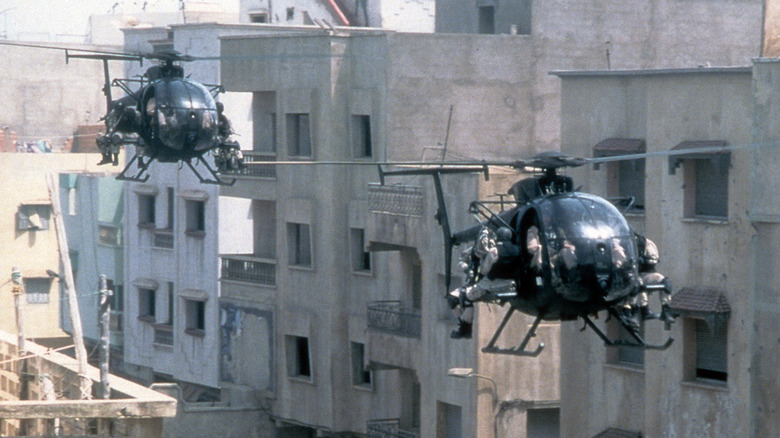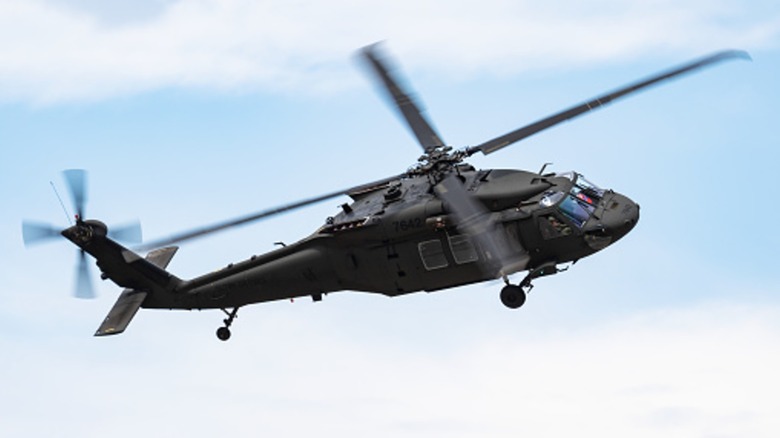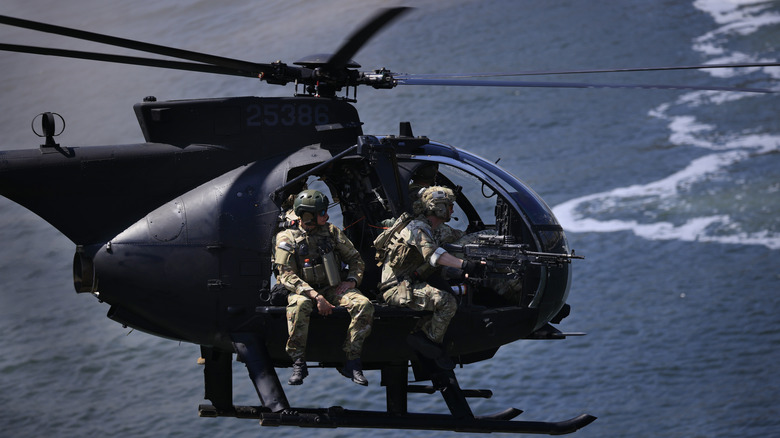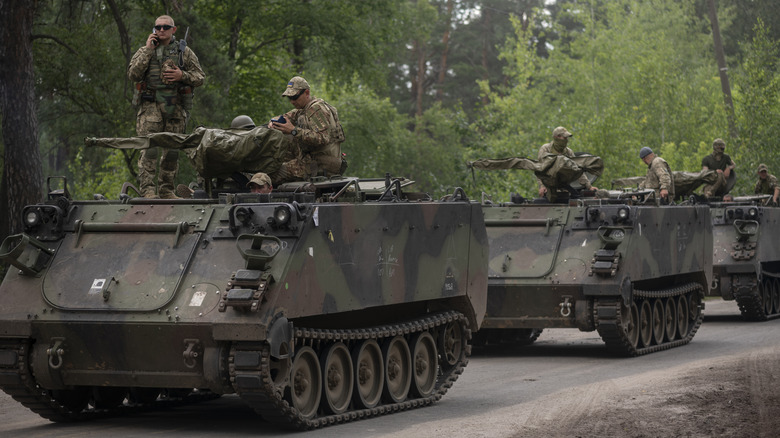While most civilians will recognize the story by both its book and cinematic name, “Black Hawk Down,” U.S. military operatives know the true story behind the helicopter crash in “Black Hawk Down” as Operation Gothic Serpent. It was an operation that saw 18 American soldiers and hundreds of Somalis perish, and left 73 Americans wounded.
Advertisement
The U.S. Army had a base in Somalia in 1992 where it assisted the United Nations with Operation Restore Hope, an effort to combat starvation. However, a Somalian warlord, Mohamed Farrah Aidid, wasn’t shy about killing U.N. peacekeepers, forcing the American government to try stopping him.
In 1993, the Army planned to arrest two of Aidid’s lieutenants at a building in Mogadishu. It was essentially a stronghold, since everyone on the street was armed and could become a combatant within the blink of an eye. The mission wasn’t supposed to last longer than an hour, but one thing went wrong and everything unraveled from there. A simple snatch-and-grab turned into an 18-hour fight for survival while soldiers embarked on search and rescue tasks in order to leave no man behind.
Advertisement
The mission, which would become known as the Battle of Mogadishu, required the efforts of roughly 160 soldiers as well as 19 aircraft and 12 vehicles. Iconic director Ridley Scott made his “Black Hawk Down” film in 2001 and did his best to re-create the events of that tragic day with as many military vehicles as he could get his hands on.
The UH-60 Black Hawk was the star of the show
The titular helicopter is used by 36 nations around the world because of its versatility and ability to hold up to 9,000 pounds of troops, supplies, or ammunition. Four UH-60 Black Hawks were tasked with dropping U.S. Army Rangers at each corner of the target building so the Rangers could surround it from all sides and ensure there was no interruption. Then those Black Hawks were supposed to take up a defensive position and cordon off the neighboring streets with their two 7.62 mm machine guns. Black Hawks are no Apache helicopters, but attacking wasn’t their primary job and the Army needed something that could fill multiple roles in Mogadishu.
Advertisement
If the Army needed the Black Hawks to be more offensive, they could have easily loaded them with External Stores Support Systems, wing-like assemblies that can have fuel tanks for extended range, Hellfire missiles, or rocket pods for attack missions attached. But audiences didn’t get to witness Black Hawks with any such attachments in Ridley Scott’s film.
Black Hawks make for easy targets when they’re flying low in an urban setting and adversaries are armed with rocket-propelled grenades. Not one but two Black Hawks were shot down in Mogadishu. The first crashed roughly 300 yards from the building where Delta Force captured 24 Somalis. Roughly 20 minutes later, a second Black Hawk was shot down and crashed, half a mile from the nearest ground assault team.
Advertisement
The MH-6 Little Bird is nimble
The Black Hawks transported the Army Rangers to the target site, but the movie highlighted two special forces groups. While Josh Hartnett’s character was part of Task Force Rangers, Eric Bana’s and William Fichtner’s characters were among Delta Force operatives. They stormed the building in the middle of the Bakaara Market and arrested Aidid’s lieutenants.
Advertisement
To get there, they used MH-6 Little Birds, the military’s super-fast — and small — combat helicopter. They only weigh 1,636 pounds when empty and their typical takeoff weight comes in at 3,350 pounds. Compare that to the Black Hawk’s empty weight of 11,853 pounds and the difference is noticeable.
The Little Birds did a better job at avoiding rocket-propelled grenades since they’re small and more maneuverable than the larger Black Hawks. And the Little Bird is a special forces favorite because its size makes it ideal for delivering troops to rooftops. In the Battle of Mogadishu they could deliver six operatives — each side-mounted bench could fit three.
The AH-6, the attack variant of the Little Bird, was also visible toward the end of the film when ground troops needed aerial backup from charging combatants. Pilots in the movie used infrared night vision to spot enemies on a rooftop and clear it out. They were armed with some kind of machine gun, which could have been an M230 Chain Gun, two .50 cal GAU-19s, or two 7.62 mm M134 miniguns.
Advertisement
Helicopters weren’t the only military vehicles used in Mogadishu
Aircraft from the U.S. Army’s surprisingly big helicopter fleet weren’t the only vehicles seen in “Black Hawk Down.” To transport the prisoners back to base, Lt. Col. Danny McKnight (Tom Sizemore) led a convoy of Humvees and M35A2 cargo trucks. Some of the Humvees were armed with .50-caliber gun turrets, which was especially helpful during the trek back to base to fight Somalis surrounding them in the Mogadishu streets.
Advertisement
It’s not mentioned in the film, but Maj. Gen. William Garrison deployed a P3 Orion spy plane during the real-life mission to help McKnight’s convoy navigate. It’s easier to plot a course with an overhead view than it is when you’re in the thick of it on the ground. Even more difficult when enemy combatants are barricading some roads. At one point, the general asked his superiors for AC-130 gunships and armor for additional support, which would have been cool to see in the film and helpful for the real-life troops.
By the end of the film, the United Nations comes in to assist the Army, extracting remaining troops from the heart of Mogadishu. The scale of the relief force isn’t evident in the film, as audiences see some M113 armored personnel carriers and French-made Véhicules de l’Avant Blindé, but it consisted of over 100 of the vehicles. And there are three U.N. M60A3 Patton tanks seen at the end of the film guarding the rally point for the Army and U.N.
Advertisement



